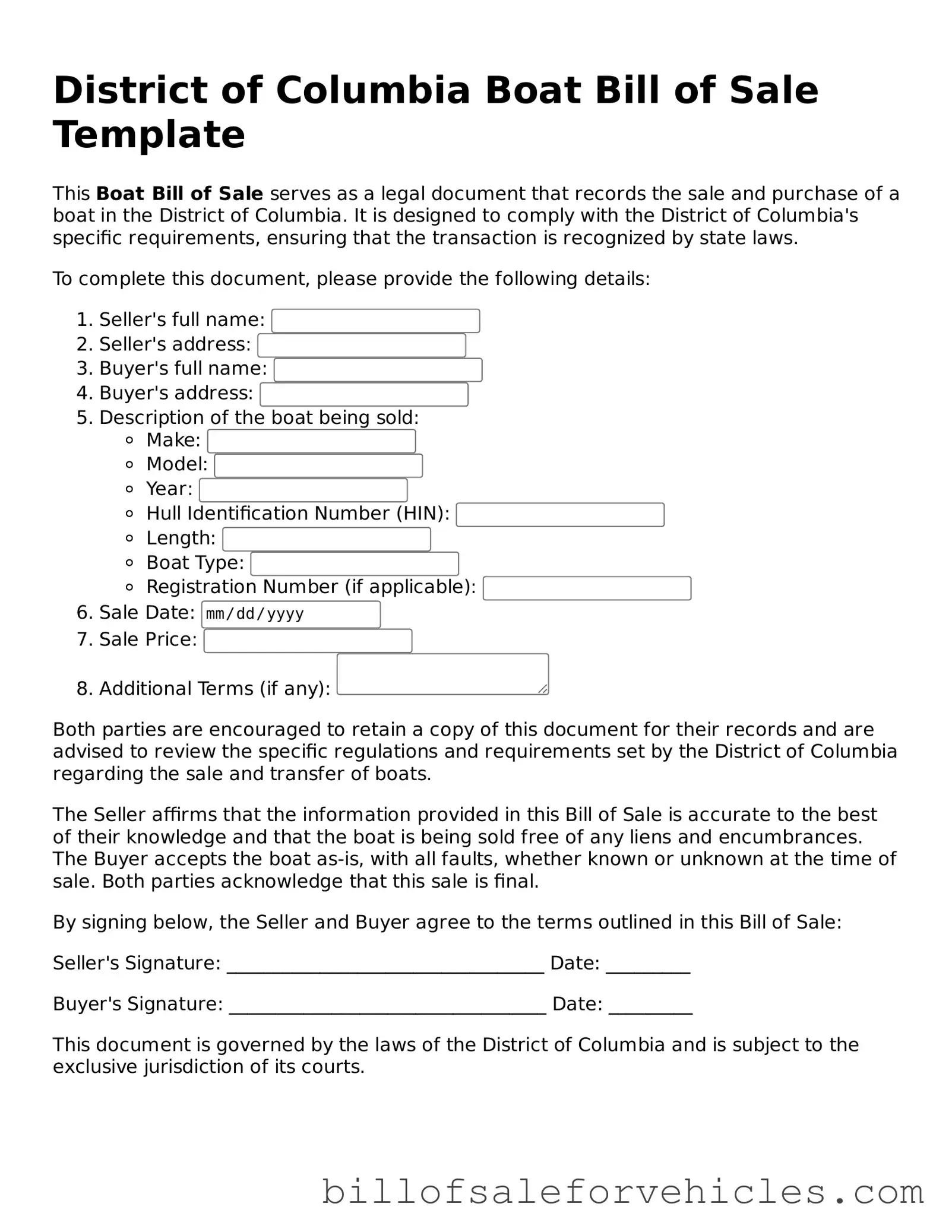What is a District of Columbia Boat Bill of Sale form?
A District of Columbia Boat Bill of Sale form is a legal document that records the sale and transfer of ownership of a boat from a seller to a buyer in the District of Columbia. It includes important details such as the price of the boat, the identification numbers, the names and addresses of both the seller and the buyer, and the date of sale.
Why is it necessary to have a Boat Bill of Sale in DC?
In DC, a Boat Bill of Sale is necessary as it serves as a proof of purchase and transfer of ownership. It is required for the registration of the boat under the new owner’s name with the Department of Motor Vehicles or other local marine authority. This form also offers protection to both the buyer and the seller in case of future disputes regarding the transaction.
What information should be included in the form?
The form should include the full names and addresses of both the buyer and the seller, the sale date, the sale amount, detailed information about the boat (such as make, year, model, hull identification number, and length), and the signatures of both parties involved in the transaction. Additionally, it's advisable to notarize the document to add an extra layer of legal protection.
Is notarization of the Boat Bill of Sale required in the District of Columbia?
While not strictly required by law, having the document notarized is highly recommended. Notarization provides a level of authenticity and can be very helpful in legal situations to prove that the signatures on the document are genuine.
Can I create my own Boat Bill of Sale form?
Yes, you can create your own Boat Bill of Sale form as long as it contains all the necessary information that identifies the boat, the sale, and both parties involved. However, using a standardized form or template is encouraged to ensure that all legal requirements are met.
What happens if I lose my Bill of Sale?
If you lose your Bill of Sale, it is important to contact the seller and request a duplicate. If this is not possible, reach out to the local marine or boat registration authority with whom the original sale was registered. They may have records or copies of the transaction. Having a Bill of Sale is crucial for proving ownership, so keep it in a safe place.
Should the buyer and seller keep copies of the Bill of Sale?
Yes, both the buyer and the seller should keep copies of the Boat Bill of Sale. Retaining a copy helps in protecting their legal rights and obligations. For the buyer, it's evidence of ownership and is necessary for registration purposes. For the seller, it serves as a record of releasing ownership and can be useful in clearing any future liabilities.
